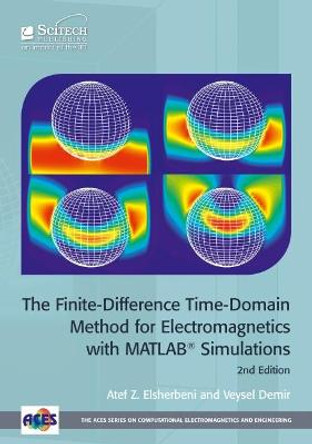Description
Provides an introduction to the Finite Difference Time Domain method and shows how Python code can be used to implement various simulations
This book allows engineering students and practicing engineers to learn the finite-difference time-domain (FDTD) method and properly apply it toward their electromagnetic simulation projects. Each chapter contains a concise explanation of an essential concept and instruction on its implementation into computer code. Included projects increase in complexity, ranging from simulations in free space to propagation in dispersive media. This third edition utilizes the Python programming language, which is becoming the preferred computer language for the engineering and scientific community.
Electromagnetic Simulation Using the FDTD Method with Python, Third Edition is written with the goal of enabling readers to learn the FDTD method in a manageable amount of time. Some basic applications of signal processing theory are explained to enhance the effectiveness of FDTD simulation. Topics covered in include one-dimensional simulation with the FDTD method, two-dimensional simulation, and three-dimensional simulation. The book also covers advanced Python features and deep regional hyperthermia treatment planning.
Electromagnetic Simulation Using the FDTD Method with Python:
- Guides the reader from basic programs to complex, three-dimensional programs in a tutorial fashion
- Includes a rewritten fifth chapter that illustrates the most interesting applications in FDTD and the advanced graphics techniques of Python
- Covers peripheral topics pertinent to time-domain simulation, such as Z-transforms and the discrete Fourier transform
- Provides Python simulation programs on an accompanying website
An ideal book for senior undergraduate engineering students studying FDTD, Electromagnetic Simulation Using the FDTD Method with Python will also benefit scientists and engineers interested in the subject.
About the Author
Jennifer E. Houle is the Vice President for Research at Moscow-Berlin Simulations. She also worked as a Senior Product Engineer at Micron Technology. She has a Masters degree in Electrical Engineering from the University of Idaho. Her work has been published in the International Journal of Magnetics and Electromagnetism and the Symposium on Nonlinear Optics and Sum Rules, and her research was presented at the 32nd Annual Meeting of the European Hyperthermic Oncology Society.
Dennis M. Sullivan, PhD, is Professor of Electrical and Computer Engineering at the University of Idaho. His research interests are electromagnetic and quantum simulation, and include hyperthermia cancer therapy, nonlinear optical simulation, and quantum semiconductor simulation. In 2013 he was made a fellow of the Institute of Electrical and Electronic Engineers. He published the first edition of Electromagnetic Simulation Using the FDTD Method with Wiley in 2001 and the second edition in 2013.
Book Information
ISBN 9781119565802
Author Jennifer E. Houle
Format Hardback
Page Count 224
Imprint Wiley-IEEE Press
Publisher John Wiley & Sons Inc
Weight(grams) 499g
Dimensions(mm) 229mm * 152mm * 15mm








